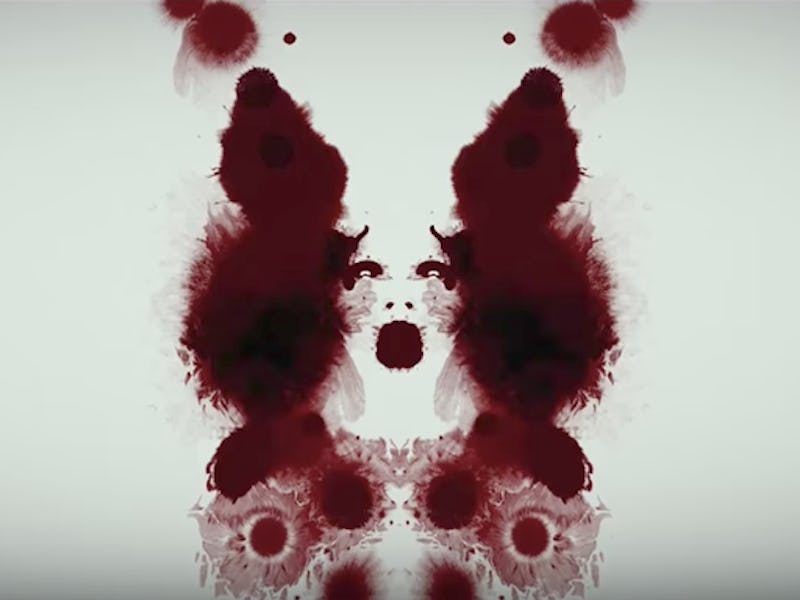Droplets of blood fall and bloom in the trailer for the upcoming Netflix psychological thriller series Mindhunter. Between shots from the show, which will explore the FBI’s partnership with serial killers when it premieres on October 13, the drops expand and gather into symmetrical blotches, forming the well-known shapes of a Rorschach test. For some viewers, they may seem to pool, eventually, into a very familiar pattern. If you start seeing an agonized face in the crimson splotch, you’re not the only one.
The Rorschach test was developed in 1918 by Swiss psychologist Hermann Rorschach, who made the ink blots himself by dribbling ink onto paper and folding them in half. Rorschach, who believed the test could help psychologists understand their patient’s perception and mental grasp, asked people what they saw in the blots and then analyzed their responses. What he was really doing was exploiting a natural phenomenon called pareidolia, which occurs every time we see things that aren’t actually there.
As you you look at the ink blot below, your brain processes the visual information in the patterns and “fills in” information, making you see things you’re familiar with. Not all brains do so in the same way, however, thus forming the basis for Rorschach’s test.
Hermann Rorschach developed his inkblot test in 1918.
Paredolia is the phenomenon that occurs when we see faces and body parts in inanimate objects or images. It explains why some people saw “spreading butt cheeks” instead of two mittens in McDonald’s 2016 holiday cups and why some people saw a demon in this picture of an Arizona tree. It’s thought that humans evolved to notice these patterns — especially faces — because it helped them identify other humans and animals who may be partially hidden. For early humans, it was important to be able to notice if a predator had its eyes on you.
Rorschach believed that the way his patients responded to the blots could be used to evaluate their intelligence and mental state. He even went as far as saying his test could help detect early signs of schizophrenia; he came up with the idea for the test after noticing that people with schizophrenia responded to Blotto — a common ink-blot game at the time — differently than others. However, its usefulness for diagnosis has always been controversial because there has never been any agreed-upon way to score the responses of patients.
In 2002, American psychologists published a review of commonly used psychological tests in the journal Psychological Science in the Public Interest and focused, in one section, on the Rorschach test. Their analysis showed that the Rorschach test wasn’t very reliable and has a history of misclassifying normal individuals as having mental illnesses. Many articles in their review point out that the test can be useful when a psychologist is starting an evaluation from scratch, but it can’t definitively say anything about someone’s mental health. Some researchers agree with Rorschach that the inkblot test can help show signs of schizophrenia or depression, but it’s just a starting point for more in-depth evaluations.
While the inkblot test may make a cameo in Mindhunter, the forensic psychologists in the show might want to do other tests on their criminals, just in case.
